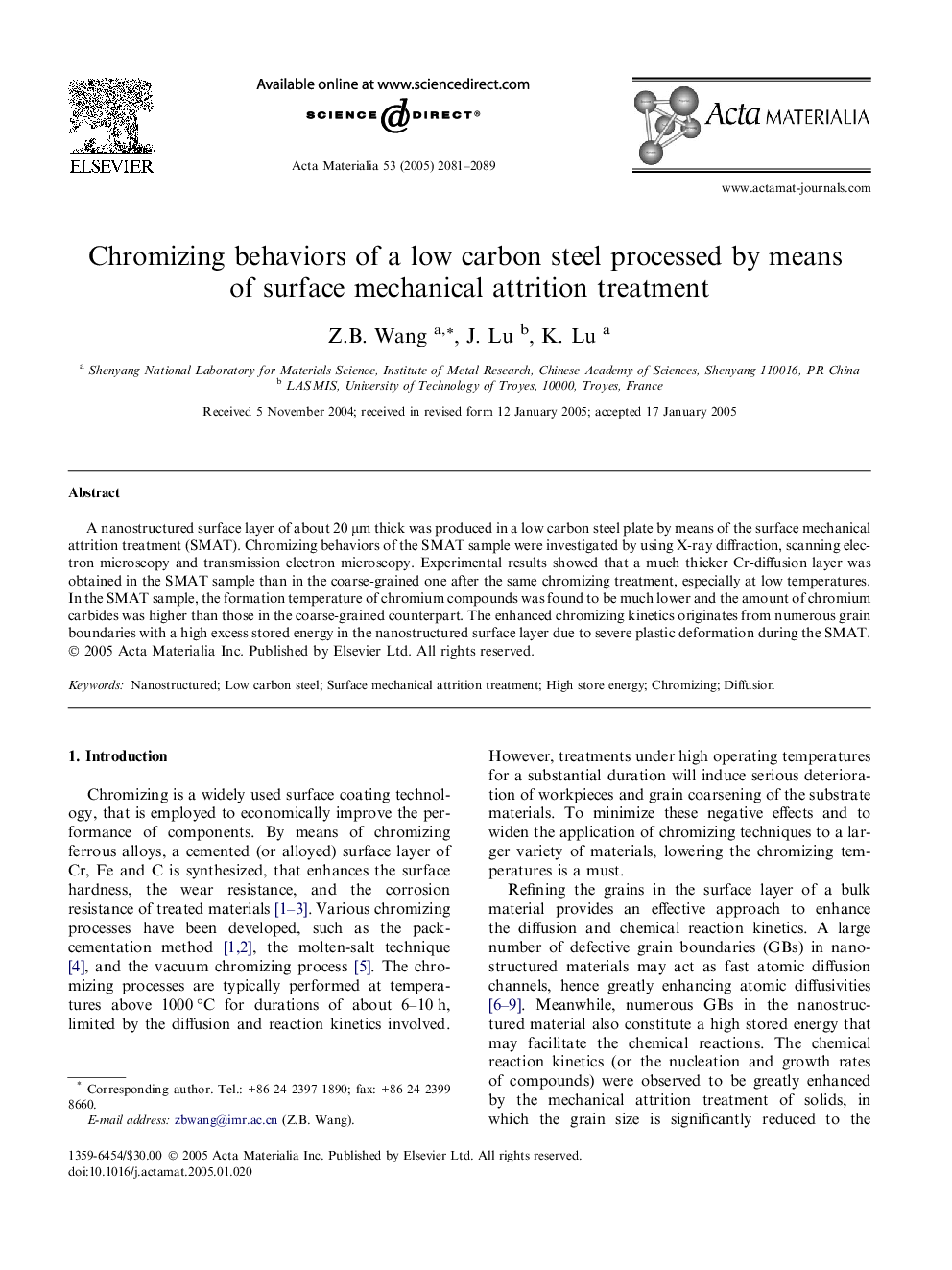| Article ID | Journal | Published Year | Pages | File Type |
|---|---|---|---|---|
| 1450915 | Acta Materialia | 2005 | 9 Pages |
A nanostructured surface layer of about 20 μm thick was produced in a low carbon steel plate by means of the surface mechanical attrition treatment (SMAT). Chromizing behaviors of the SMAT sample were investigated by using X-ray diffraction, scanning electron microscopy and transmission electron microscopy. Experimental results showed that a much thicker Cr-diffusion layer was obtained in the SMAT sample than in the coarse-grained one after the same chromizing treatment, especially at low temperatures. In the SMAT sample, the formation temperature of chromium compounds was found to be much lower and the amount of chromium carbides was higher than those in the coarse-grained counterpart. The enhanced chromizing kinetics originates from numerous grain boundaries with a high excess stored energy in the nanostructured surface layer due to severe plastic deformation during the SMAT.
